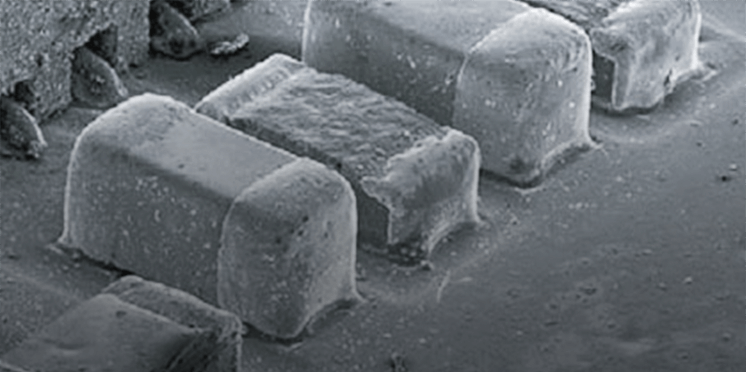スタンダードレス定量
スタンダードレス定量
standardless quantitative analysis
[目次:分光分析(EELS/EDS/電子構造)]
EDSによる元素の定量分析をする際に、標準物質からの発光X線強度の測定をその都度行うこと無しに定量する方法。最近の装置では、あらかじめ多くの標準試料(スタンダード)で実測したX線強度のデータからクリフ・ロリマー(Cliff-Lorimer)法で用いられるk因子をメモリに内蔵しており、標準試料をその都度、測定しなくても定量結果が得られるようなシステムになっている。この方法を、毎回の標準試料測定による定量と区別するため、スタンダードレス定量とよんでいる。TEMでは約数10nm以下の薄膜試料の場合、試料による吸収効果や蛍光励起効果を無視できるとしてクリフ・ロリマー法による定量法が一般に用いられる。例えば二元系試料ABの場合、ABの質量濃度比を、計測されるAB元素のX線強度比に比例する(その比例定数k)として算出する。k因子は、イオン化断面積、蛍光収率および検出器窓材の吸収などによるが、実際には標準試料を用いた実測により求められる。ただし、試料が厚い場合にはkは定数でなくなる。
A system by which quantitative analysis of target elements in EDS can be conducted without using the standard specimen in each analysis. In a recent TEM, many k-factors of the Cliff-Lorimer method, which have been measured separately, are stored and tabulated in the memory of the computer on the TEM. Quantitative analysis of the elements can be performed by referring the table without measuring the standard specimen. The system or method is called "standardless quantitative analysis." In TEM, when a specimen thickness is 10 nm or less, the Cliff-Lorimer method (thin film approximation) is generally used because the absorption effect and the fluorescence excitation effect can be neglected. For example, when a specimen is composed of two elements A and B, the mass concentration ratio of element A to element B is well assumed to be proportional to the measured characteristic X-ray intensity ratio of element A to element B (proportionality factor: k). The k factor, which depends on ionization cross section, fluorescent yield, X-ray absorption by material of detector window, etc, is actually obtained from characteristic X-ray measurements of a standard specimen. It is noted that the k factor is not a constant when a specimen is thick.
関連用語から探す
説明に「スタンダードレス定量」が含まれている用語






